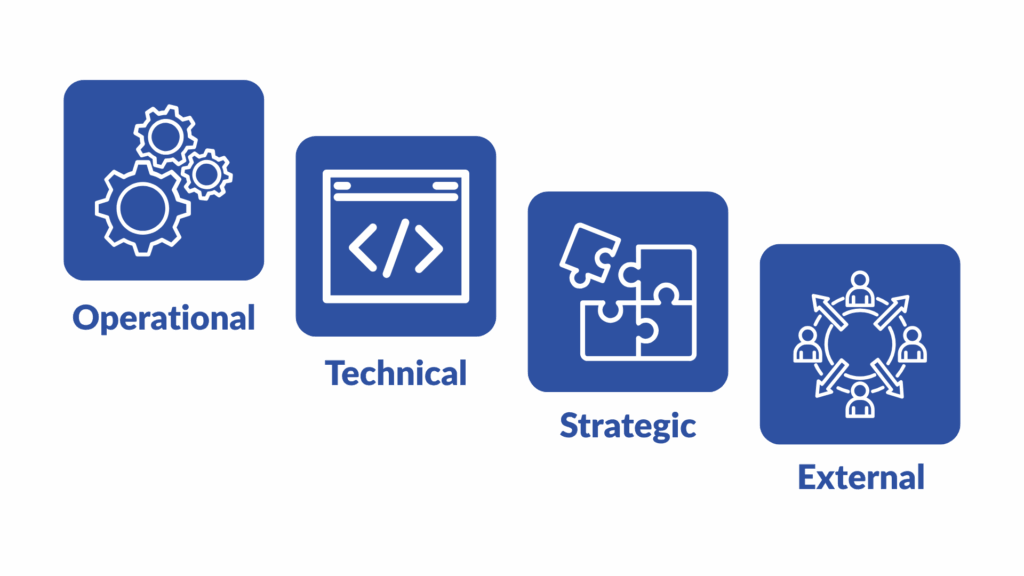Week 1 | Week 2 | Week 3 | Week 4 | Week 5 | Week 6 | Week 7 | Week 8 | Week 9 | Week 10 | Week 11
When people think of cybersecurity, they often picture hackers breaking through firewalls.
But not every risk comes from a malicious actor. Some risks stem from mistakes, system failures, or even the absence of a clear process.
Recognizing the full range of risks that affect government systems helps agencies and providers anticipate issues before they happen — and reduce their impact when they do.

1. Operational Risk
Operational risks arise from how systems and processes are managed day to day. A misconfigured setting, a missed patch, or an accidental deletion can disrupt services just as easily as an external attack.
These risks are often caused by human error or internal process gaps. They can be reduced through clear standards, training, and automation that make secure actions the default, not the exception.
2. Technical Risk
Technical risks come from weaknesses in the technology itself. Vulnerabilities in code, outdated components, or unsupported platforms can expose systems to exploitation.
Managing technical risk means identifying and addressing these weaknesses through continuous monitoring, updates, testing, and secure configuration — ensuring systems perform as intended under real-world conditions.
3. Strategic Risk
Strategic risks occur when technology decisions don’t align with an organization’s mission or long-term goals. Adopting tools that don’t meet security requirements, delaying modernization, or underestimating needed resources can all increase exposure.
Cybersecurity isn’t just an IT issue — it’s an organizational one. Managing strategic risk requires leadership alignment, policy integration, and clear communication between decision-makers and technical teams.
4. External Risk
External risks come from outside an organization — such as cyberattacks, natural disasters, vendor outages, or supply chain disruptions.
While external threats can’t always be prevented, their impact can be minimized through preparedness, redundancy, and strong incident response plans. Knowing where third-party dependencies exist is key to understanding how external risk can cascade into public services.
Connecting the Risks
These four types of risk often overlap.
A technical vulnerability can cause operational downtime.
An external outage can test an organization’s strategic resilience.
Understanding how risks interact helps teams take a more complete, proactive approach — one that accounts for both human and technical factors.
How GovRAMP Reduces Risk
GovRAMP helps public-sector organizations manage all four types of risk through consistent, verified security practices.
- Operational: Defined controls and standardized processes reduce misconfigurations and procedural errors.
- Technical: Continuous monitoring and independent assessment identify weaknesses before they cause harm.
- Strategic: A unified framework aligns cybersecurity with mission priorities and accountability.
- External: Verified providers and tested controls reduce exposure from third-party systems and supply chains.
By providing a shared foundation for assessment and authorization, GovRAMP helps agencies and providers not just respond to risk — but anticipate, measure, and reduce it.
The Bottom Line
Cyber risk isn’t limited to hackers or breaches. It includes the human errors, technical flaws, strategic decisions, and external factors that can affect system reliability and public trust.
Recognizing where risk originates — and how it connects — allows organizations to manage it more effectively.
Through consistent standards, independent verification, and continuous monitoring, GovRAMP enables a proactive, risk-based approach that strengthens security across government.

